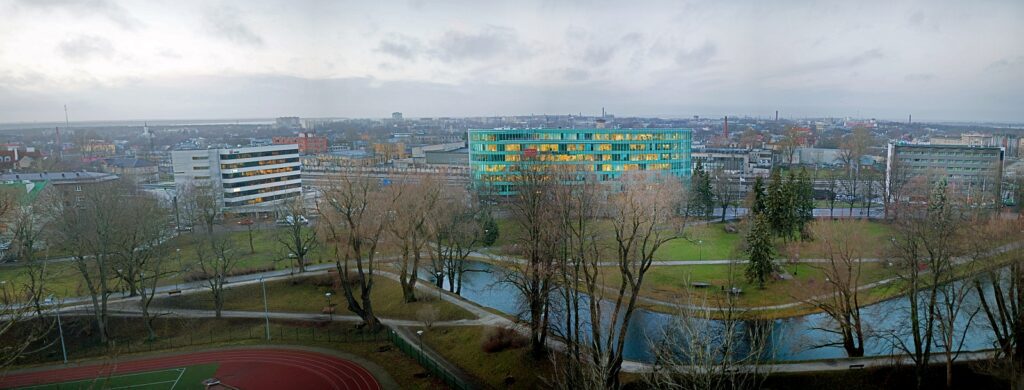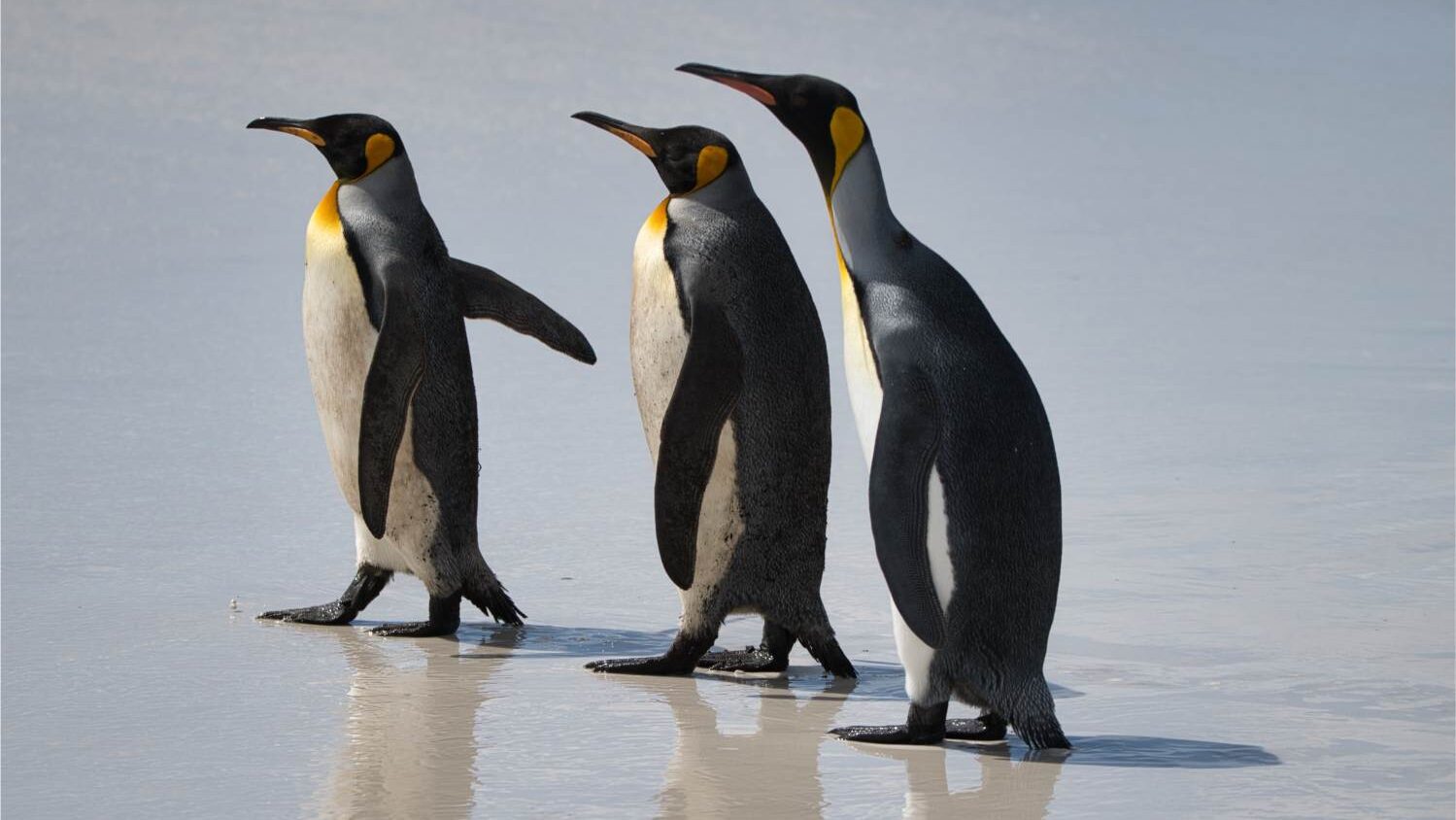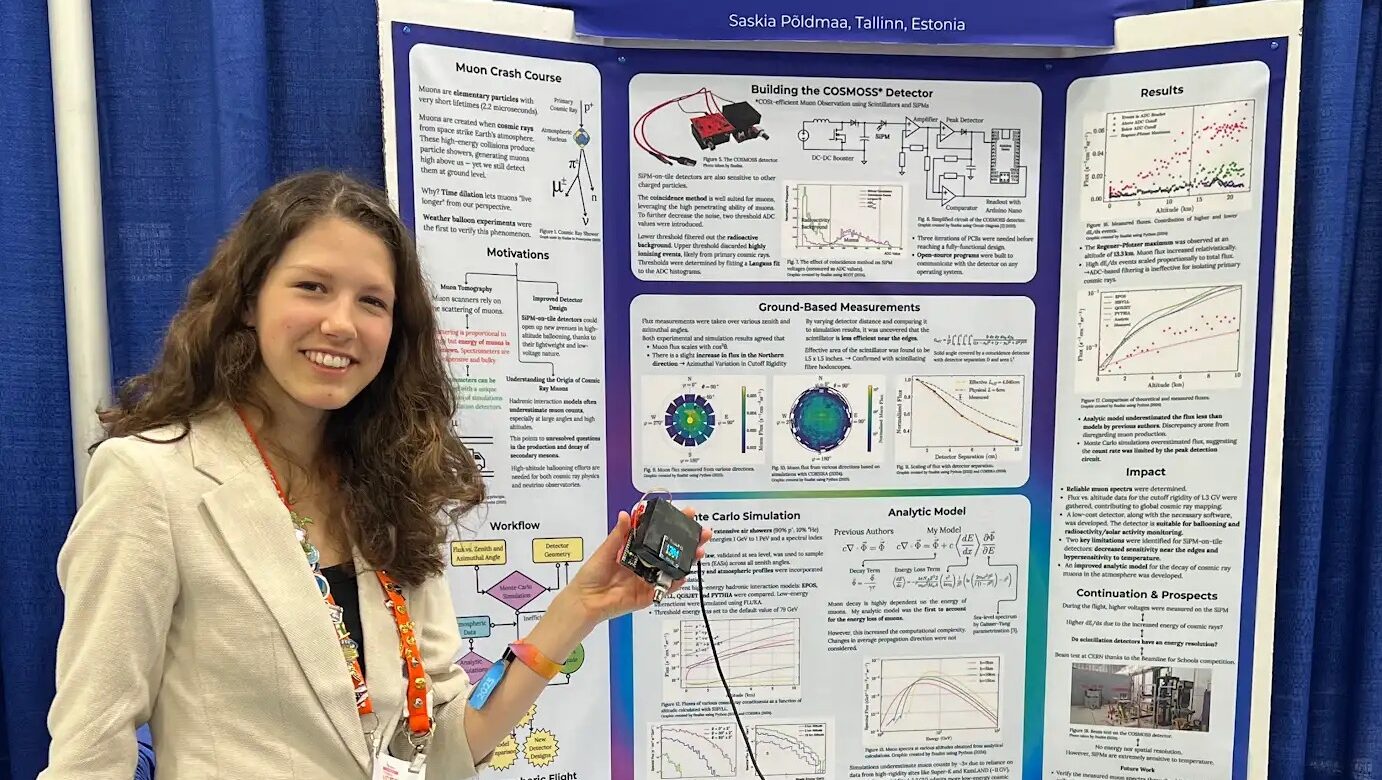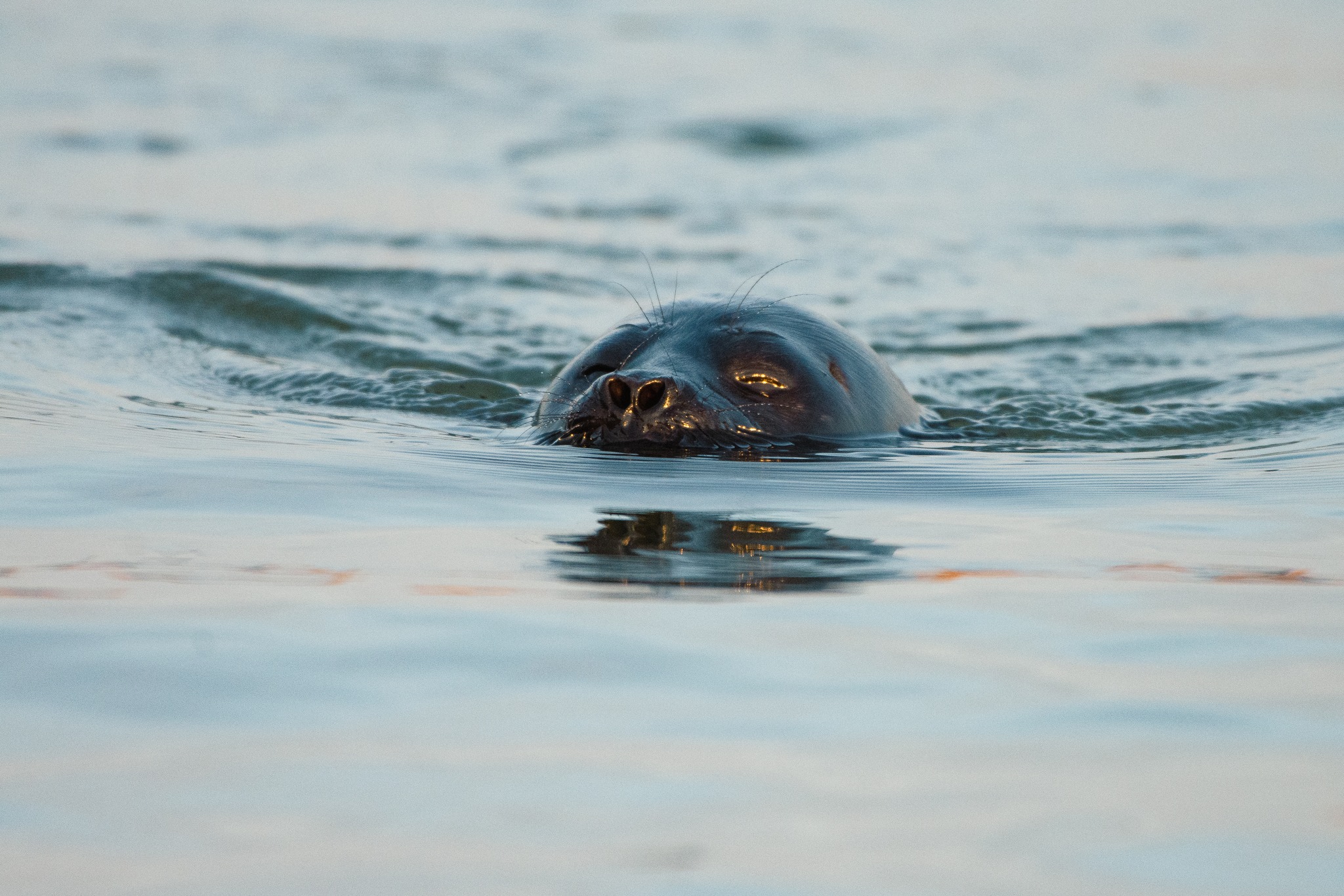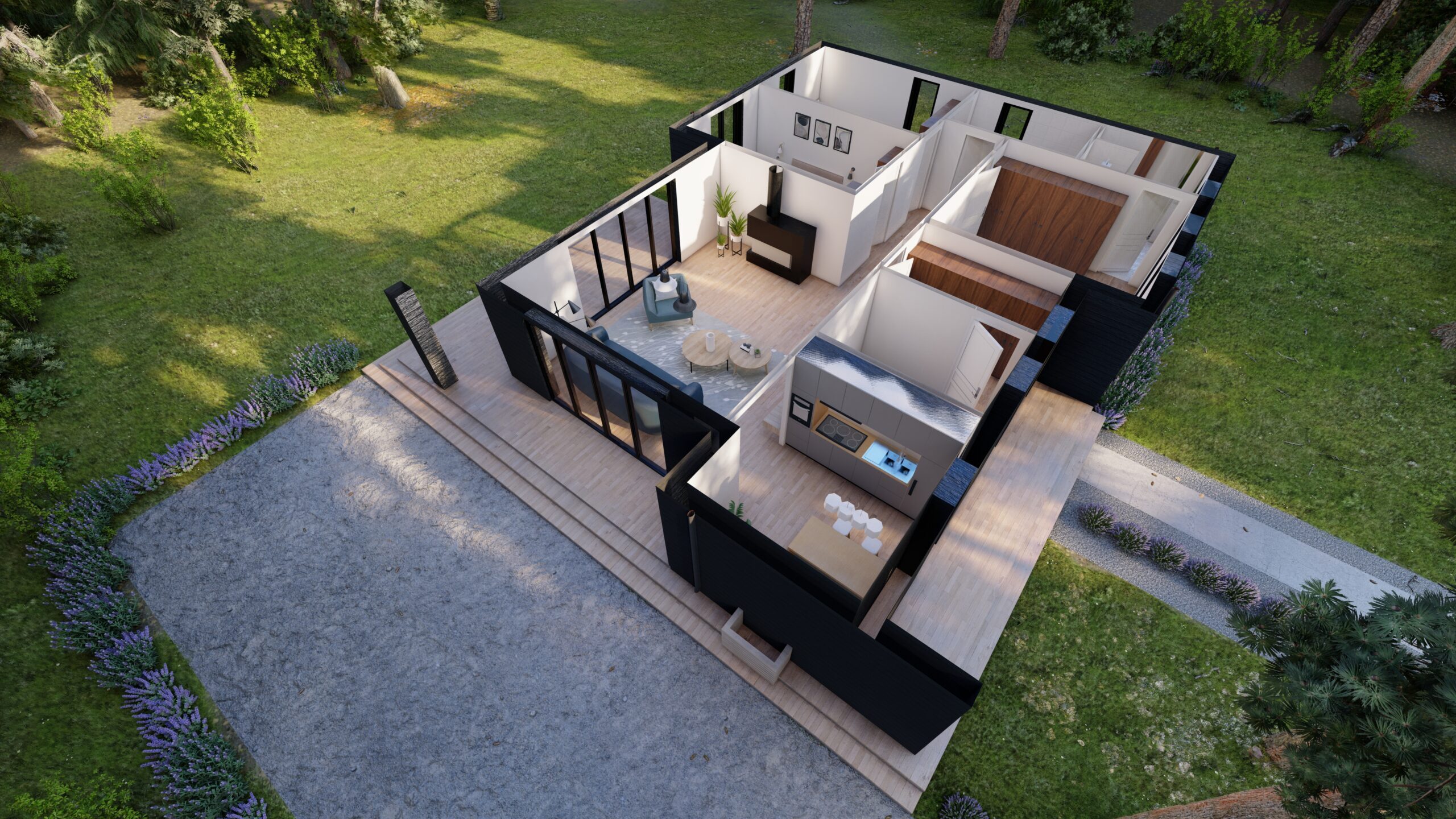Hopefully, since I wrote my last article, readers have been able to capture some breathtaking panoramas. This is a very special but accessible photographic practice that we can all take part in.
Unfortunately, it's also an undervalued one. Although I reached out to my colleagues for their panorama photos, I didn't get much back. Some said that they had never taken such photos. Luckily, one person tried it after I sent out my call for submissions, and she did very well. It's always so great to see other people's work, especially if they have visited different places and kindly captured novel moments on camera for me.
Below you can see panoramas from my colleagues and also some from my own collection. It's worth mentioning now that one can do also vertical panoramas, in other words vertoramas. Please check out this short, but very descriptive guide on how to photograph a vertorama. Dina did a great job capturing the beauty of Toronto on a vertorama, which you can see below. Great job!
(Note: To see these photos in full-screen view, right click / control click the image and select “open image in new tab.”)
Dina Narciso
Construction All Around Us, Bloor St. West, 2023

Panoramas are an awesome way of capturing something that doesn't fit fully into your phone or camera's view. They create miracles when used in tight spaces. Those who have been near Tartu College this fall know how tight it is around there and how much commotion there is due to four construction projects, which are all taking place simultaneously. This panorama, which Dina took, will always remind me of this hectic period for the people of that area.
NB! Please note the black small areas on the top left and bottom right corners. These may show up when shooting panoramas with your phone. They appear if one hasn't completely followed the directional arrow and instructions on their screen as required while shooting the photo.
Foggy View, St. Michael's Hospital Looking West on Queen St., 2019
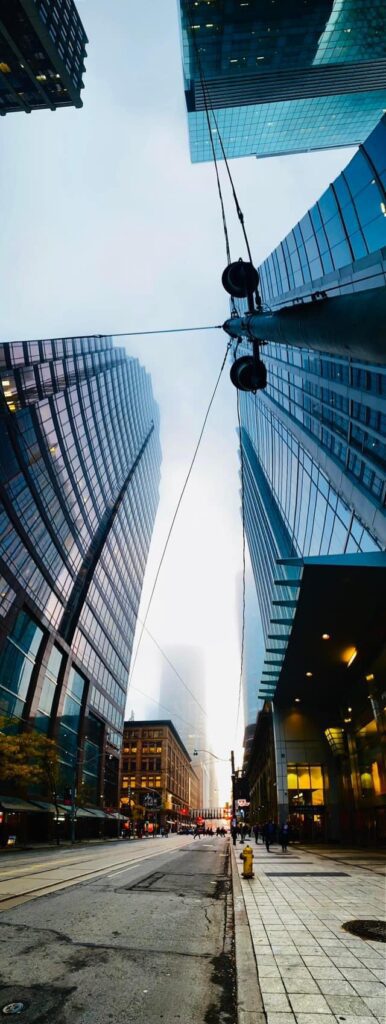
View of Toronto, 2019
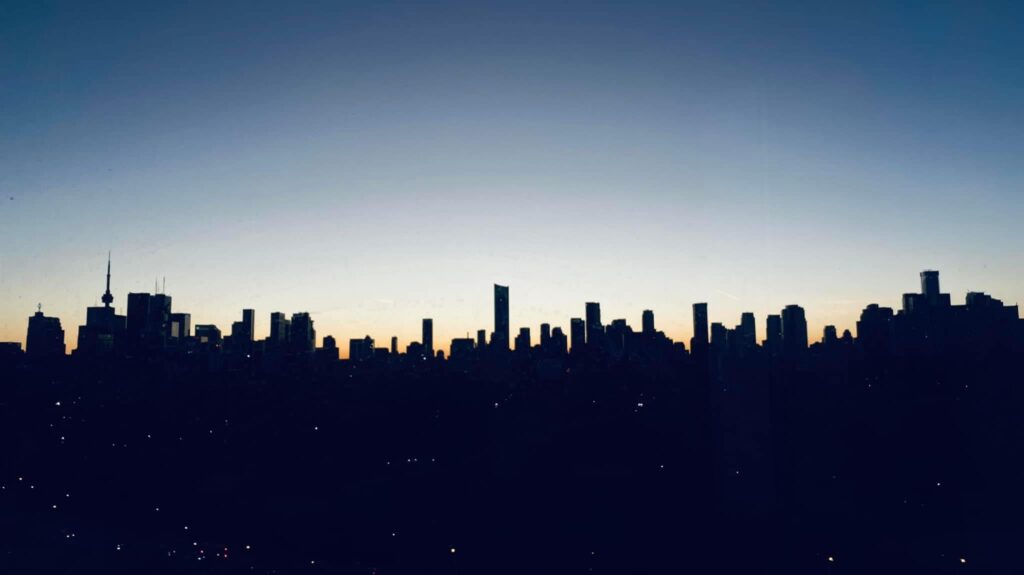
This is a great silhouette shot and a smart way of using panoramic photography to capture a magnificent view.
Dina took these last two photos in the area around her mom's long-term care home (one outside and one from inside the room) during late-night visits to see her. It was a really tiring period for her and the views she was able to capture helped to distract her mind. I especially love and am super happy that Dina sent in a vertorama, to show another way one can use the panoramic photo process to capture wonderful views.
Filomena Bettencourt
Downsview Park, 2023
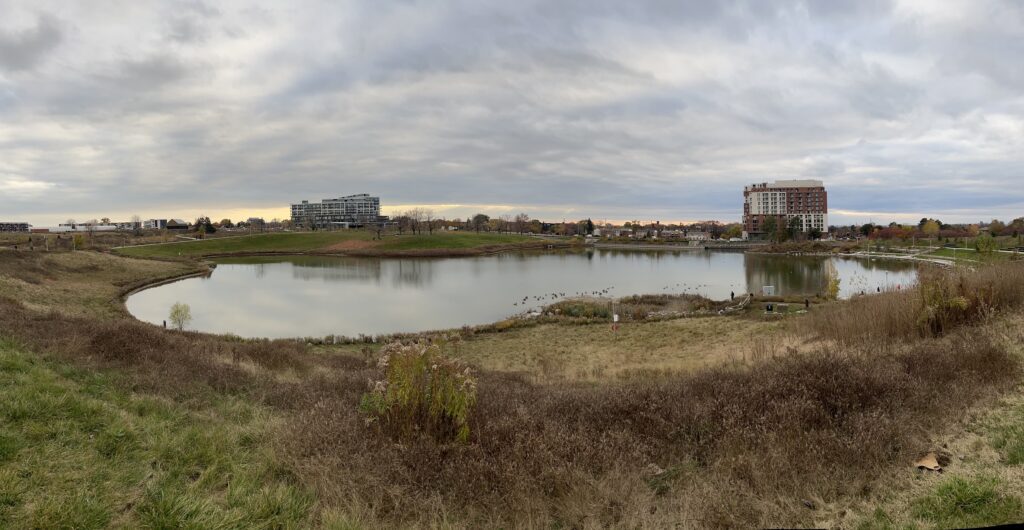
I was so glad to hear that Filomena decided to practice panorama photography after the call to collect my colleague's photos. She went to Downsview Park, in the northern part of Toronto, to capture some views there. For a first-time panorama photographer, she captured a great one. I love how the sky looks, plus the different layers of her photo — the front, the middle, and the back — this is the whole idea of a panorama photo.
Kati Kiilaspea
Canadian Tire Motorsport Park, 2022
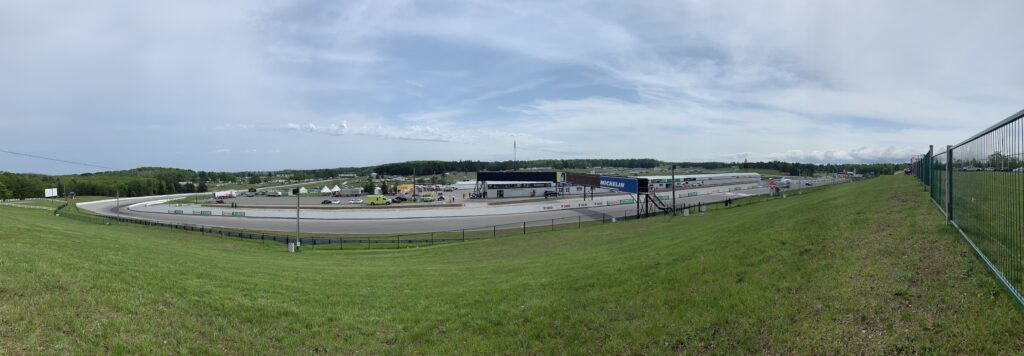
Kati has allowed us to visit the Canadian Tire Motorsport Park. Even if a slightly closer shooting position would have produced better results, we are still able to see the race track fully. What Kati did here is one of the key reasons to take panorama photos in the first place — she saw something unique and she wanted to capture it in its full glory. The panorama setting helped her achieve this.
Lake Ontario, 2021

I wanted to show this panorama because of a flaw which may come up when photographing such views. Even if the lighting seems constant, you may end up with a darker frame in your panorama, as happened with Kati's photo above. There are several reasons why this may happen. The main reason may be that the left side of the panorama is brighter than the right side regardless of what the camera did. As you’re panning and taking the picture, the camera has auto exposure turned on. What you’re seeing is an exposure change occurring during the panning of the panorama. The camera starts out seeing darkness. Then, as you turn, it sees brightness and adjusts the exposure accordingly. In this case, the end result is not great because everything is photographed with auto exposure. If possible, try to take another panorama and see if the black area is gone on the new photo.
Vincent Teetsov
A Lake in Northeast Ontario, 2020
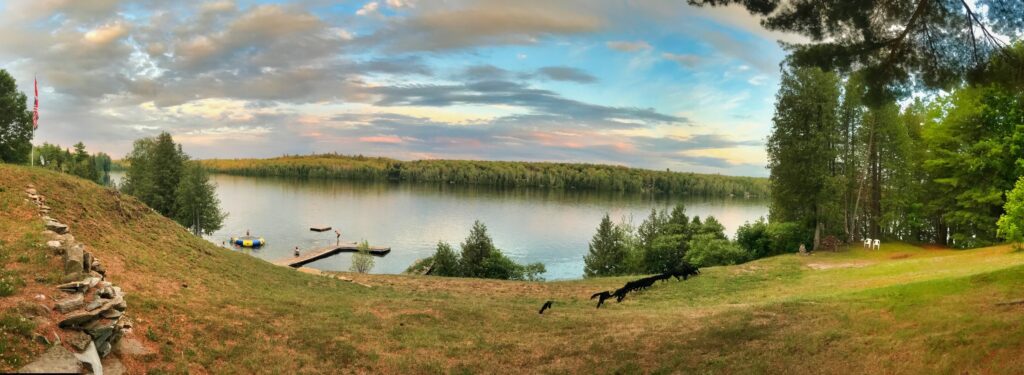
Views around bodies of water seem to offer great views. Almost half of the photos I got were taken by the water. This one taken by Vincent is a great example for two reasons. First, take a look at the horizon, which is tilted. When taking panorama photos, make sure that it's straight and then position your camera to the end where you are starting to take the photo. Second, if any fast-moving objects enter the frame while you are taking your panorama photo, then you may end up, as Vincent described to me, “with a wacky effect.” In this case, it was caused by a dog running through the panoramic photo.
Disneyland, Japan, 2022

At the same time, Vincent was able to almost flawlessly capture the business of a crowd in a store at Tokyo Disneyland. Huge crowds like this usually are very difficult to capture, as connecting all the frames may not be so seamless. If you look closely, you can see some flaws, but since the crowd is busy overall, you may not notice them so easily.
Below are a few of my panoramas in addition to all of these wonderful shots.
I've always found Ballahack Road in Lennox and Addington County, Ontario very inspiring. I've taken so many panoramas in this place. So you shouldn't be surprised to find two more photos from there below. In addition to the fall photo I shared previously, below are spring and winter photos from the same area.


The last photo is a bit of a surprising view of Tallinn. Not the beauty, glory, and ancient buildings, but a quite gloomy and modern perspective instead.
